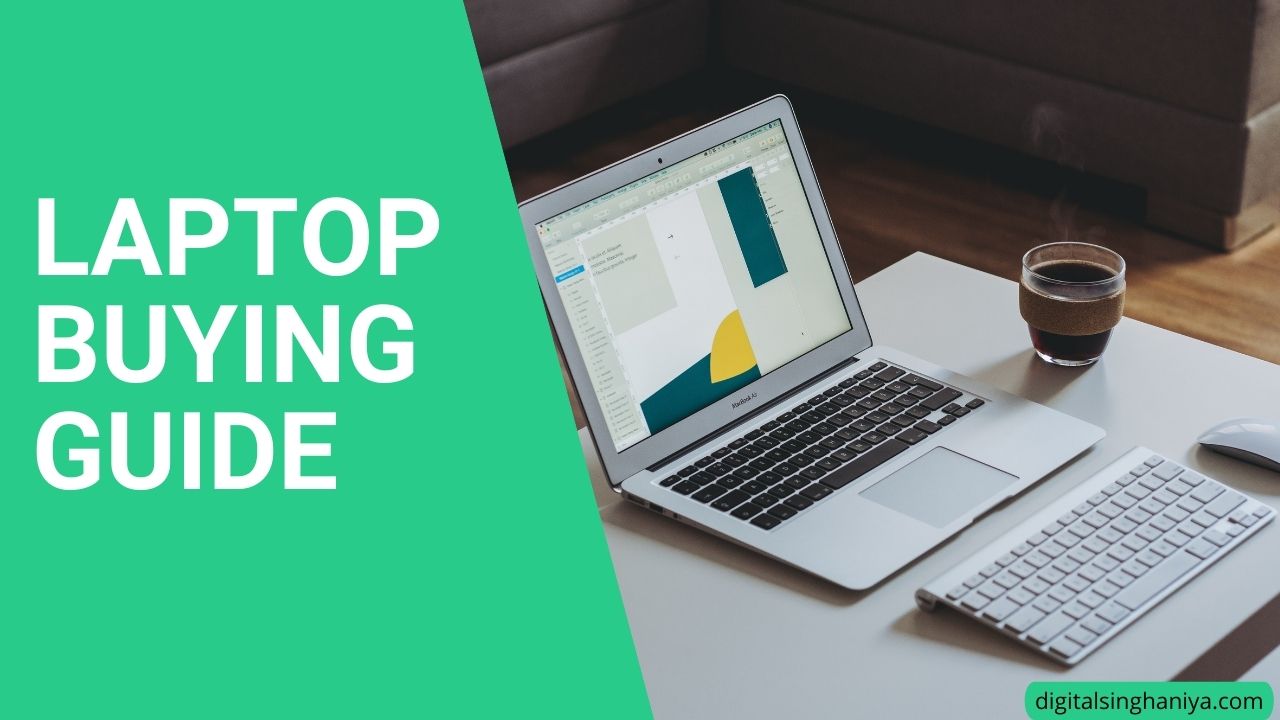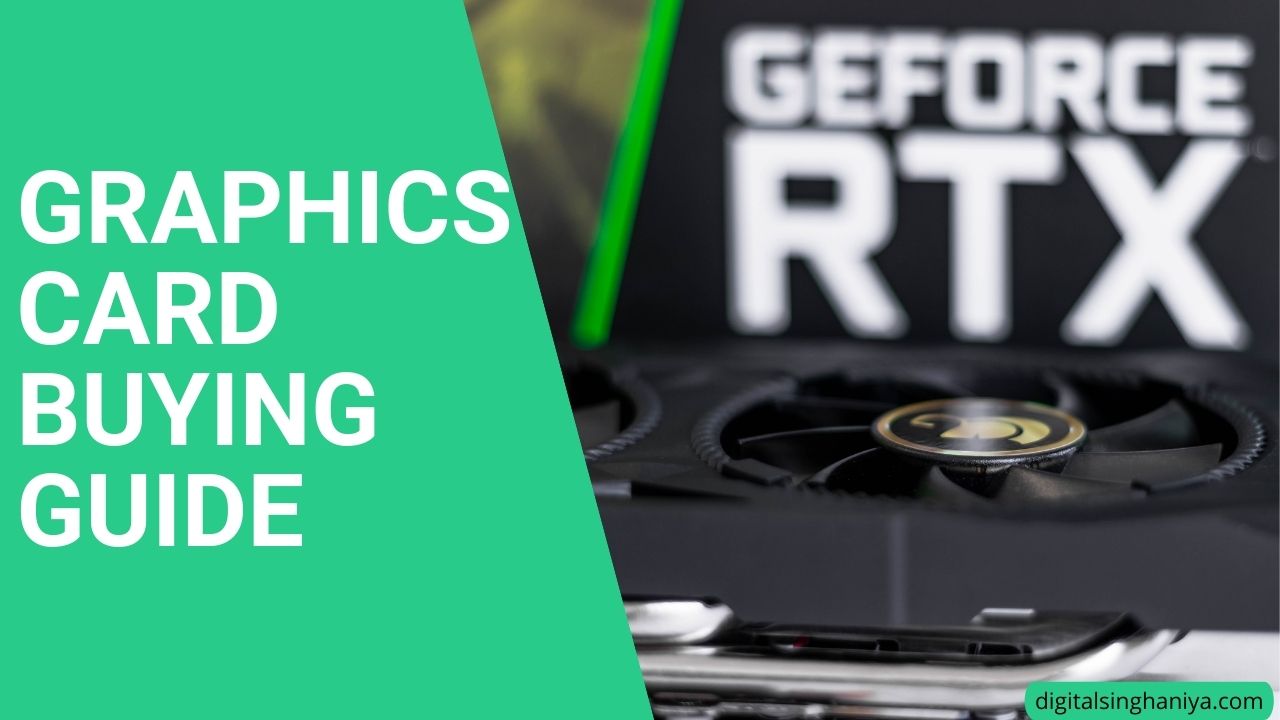Table of Contents
Laptop Buying Guide 2021
Buying a laptop can be both exciting and doubting with so many technological advancements. So Now after testing over 100s of laptops and computers for 13 years, so we decided to publish an in-depth buying guide that’ll help you learn about important things and specifications to consider while purchasing a laptop.
Buying a laptop is easy but choosing the best is more difficult for many users that’s why our guide will help you to find the best one.
What to Look for When Buying a Laptop
Some of the key factors that you need to look out, which are mainly to do with specifications, however when buying personal taste also plays an important role so you have to go for the best brands’ laptops specifications that your budget can handle, that way you compromise on nothing.
Since festive seasons come with offers galore look for the best deal during popular festivals. That way you get more from your assigned budget.
Now we have to summarise the key takeaways right at the start, here are the individual aspects that you need to consider before selecting the perfect laptop for all your requirements :
OPERATING SYSTEM
The usual inclination is to always start with the physical aspects of a laptop. However, we all need to understand that the operating system plays a major role in determining the choice we make. A quick glance at your laptop specification sheet will tell you that the type of OS that is preloaded on your laptop.
Verifying the OS is one of the most important steps when buying a laptop. We must also note that most laptop features one of the three prime operating platforms like Windows OS, Mac OS, and DOS. However, there are some devices that even feature Linux, which allows them to be installed along with one of the existing platforms like Windows OS.
- WINDOWS
- MAC OS
- LINUX
- DOS
Windows is an operating system offered by Microsoft. At present, the latest version of Windows is Windows 10. Every other laptop features Windows OS the reason being interactive aspects and user friendly, this is a highly flexible OS that is pre-existent on most laptops.
This OS is easy to use, comes with an intuitive GUI, and has air familiarity about it, no matter which version you use. This Windows making it an ideal platform for work and study use. The hardware manufacturers make their devices windows compatible by offering software as OS is the default choice.
The OS that comes loaded on Apple laptops. If you are planning to concentrate on aesthetics, class, comfort, and features all at the same time a MacBook is the best choice for you. Firstly The running Mac OS are MacBooks which are further segregated into MacBook Pro and MacBook Air.
The Mac OS promises a simplified user interface compared to windows. At present every MacBook is running on the Mac OS which has all the features available on the Windows 10 OS. Another stand-out benefit of the Mac OS is the degree and ease of multitasking it facilitates. If you are working in a setup that has a predominately Apple-based ecosystem then Mac OS will be worth its price tag.
Linux is an open-source operating system. It is free to use you can install Ubuntu or Fedora without spending any single penny. The laptops pre-loaded with Linux are sure to be cheaper than others. Although this operating system is highly useful for engineers and technical students, the normal user finds it difficult to use it. Linux is a great companion for computer programmers as it has support for a wide range of programming languages, it keeps you part of the open-source community.
DOS- Disk Operating System. DOS is developed by Microsoft. This is the very basic and practically outdated OS. It supports basic functionality. It is fast and quick boots. DOS OS comes preloaded on some of the best laptops in India are sure to be cheaper than others. In this way, you can get great laptop specifications at a cheap price and then install a free OS like Windows, Ubuntu, Linux later.
PROCESSOR
The Processor speed indicated on the laptop specification sheet indicates how many instructions your computer can handle per second. It is measured in GigaHertz ( GHz). Today processor won’t comprise one core but multiple cores. A single core separate processing unit within the CPU capable of handling instruction. So Multiple numbers of cores, the more numbers of tasks your laptop can handle efficiently at a time.
Now if you are looking to consider the processing powers of the device before making a purchase, it is time to give some thought to the processor of the laptop is offering:
- AMD PROCESSORS: Budget and Expensive processors both come on High end and low-end laptops. The Budget AMD Processors allow everyday basic computing tasks like surfing, streaming, and light office work. Expensive AMD Processors allow intensive business use, demanding games, and multitasking.
- ATOM/ CELERON/ PENTIUM: It is a Budget processor that allows for everyday basic computing tasks like surfing, streaming, light office work.
- INTEL CORE I3: The performance of these processors is average and a bit downgraded to the i5 processor, But It supports seamless execution of everyday tasks including 4K, 360°, and HD viewing.
- INTEL CORE I5: It is the best processor if you want a laptop for both personal and business use. It gives you more than i3 with more power and more responsiveness.
- INTEL CORE I7: This processor made for more intensive business use, demanding games, and multitasking.
- INTEL CORE I9: This processor is very powerful if you are interested in gaming performance for High-end gaming inclusion, rigs, and setting up rendering and graphical workstations the i9 is the best processor. It made for intensive more demanding applications, games, and programs.
DISPLAY SIZE AND QUALITY
The laptop display comes with three main elements: screen size, screen resolution, and display type.
SCREEN SIZE- A laptop’s dimensions comprise width (length b/w left and right corner), depth, and height
but it is not screen size, screen size measured diagonally that is from bottom left to the top right corner of the display. the screen size is 10.1,11.6,12.1,13.3,14,15.6,16.0,17.3 inches.
however, screen size does not give you the entire picture. you have a 12.1-inch display with a height of 7.3 inches and a width of 9.6 inches. Now a term aspect ratio is knowing how your screen like square-like or rectangular-like. while 4:3 ratios are the older variants and 19:9 are the ones most used today and it provides wider viewing.
In terms of popularity,15 inches, 15.6 inches, or a screen falling in the 14 inches to the 16-inch bracket can be considered standard. The display here is largely making it easy to work with and view media.
DISPLAY RESOLUTION:
Display resolution indicates the number of pixels that contains on-screen. As you expect more pixels, the better or sharper the image. or we can say the higher the pixel count, the more content that can be shown on the screen. Display resolutions are classified as per their pixel count measured vertically and horizontally. These are HD(720P) FHD(1080P) and UHD 4K.
HD: This display gives you a 1280 x 720 pixel (720p) resolution. Most of the budget laptop carries HD display, it gives decent visuals, quality and color density.
FHD: This display gives you a 1920 x 1080 pixel (1080p) resolution, It gives a much sharper display than HD variants.
UHD 4K: This display gives you a 3840 x 2160 pixel. This display features a 4x increase from FHD. Basically, this display found on high-end laptops.
DISPLAY TYPE:
The display type is another important parameter. That indicates the technology behind the LCD screen panel. There are two most commonly used technology-IPS(In-Plane switching) and TN(Twisted Nematic). There is a VA(Vertical Alignment) which promises a mean between IPS and TN. Now we explain these technologies:
- IPS: It provides wide-angle views, better color depth, and reproduction.
- TN: It is better than IPS and it is a top choice for gamers. It comes in budget-friendly and quick response time.
- VA: It beats IPS Displays. It provides a great contrast with rich deep black levels and good color reproduction but response time is poor.
STORAGE
In terms of performance storage consist of two elements: RAM and ROM
RAM: Stands for Random Access Memory, Every processor needs to support RAM to perform at its best. we can say RAM is the backbone of a laptop. A majority of budget laptops come with 4GB of RAM.
Now let us know the larger amount of RAM has smoother your experience will be more it means you execute multiple tasks smoothly. it allows your laptop to perform in the background.
ROM: Stands for Read-Only Memory. It is an important factor to consider while purchasing a laptop. Most of the laptops feature HDD( Hard Disk Drive) with abundant storage support.
HDD is computing congestion as they lead to slower speeds and it comes with restricted cache memory 8 MB-16 MB. Most of the laptops get 500GB or 1 TB up to 2 TB.
SSD has a great advantage and makes sure that your laptop works faster as compared to HDD.
So we recommended that you have at least some amount of SSD storage along with HDD storage. Commonly, you should have 128GB SSD as a boot drive as thus significantly load times and OS performance.
PORT AND CONNECTIVITY
Best laptops offer both usability and portability. The laptop’s usability is the ports it comes with such as A Photographer would require an SD card reader to transfer files images, a Businessperson would need an HDMI/VGA slot to allow for projecting presentations and if you prefer to use an external keyboard, wireless mouse and frequent internal stick then multiple USB ports is important.
- USB: USB allows to connect with compatible devices like external hard drives, wireless mice, external keyboards, cameras, smartphones, scanners, joysticks, printers, and other devices.
- CARD READER: This port allows you to read your data from a memory card.
- HDMI: This port allows to transmit/receive both video and audio content, and projectors are also used by HDMI slot.
- VGA: VGA is an analog port widely used before HDMI entered the market. It is only if you need to connect to monitors or projectors.
BATTERY LIFE
Each of the processing components and hardware inclusion requires power which is either supplied by electricity or the included battery.
So the ideal scenario is to purchase a device that offers at least 6-8 hours of backup. A long battery allows you to work when there is no power as you travel or even when you forget your charger back at home.



